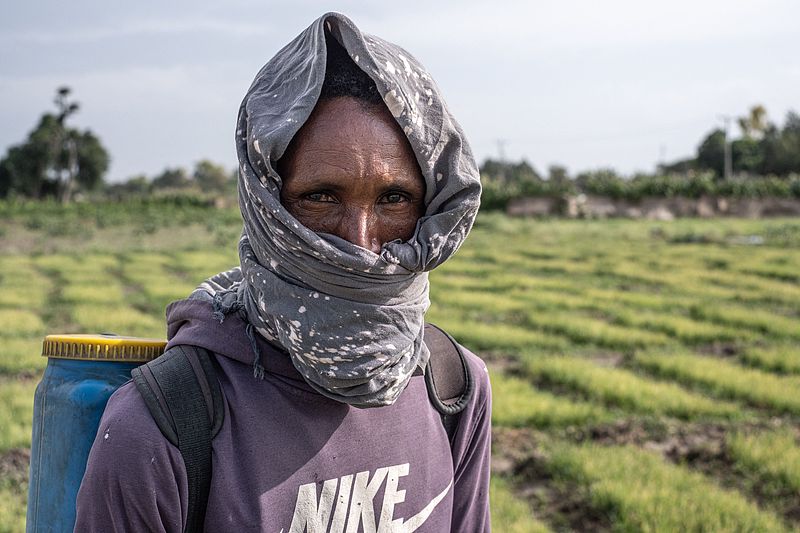
Locust swarm begins to take an economic toll
For farmers in Kenya’s upper eastern region, the rain that fell during November and December was a blessing.
The rain allowed the farmers to begin their planting season in the hopes of a bumper harvest.
But within a few weeks of planting, their hopes soon turned to despair as millions and millions of locusts swarmed into their lush, green fields.

The locusts quickly devoured everything in sight. New shoots that had just sprouted, seeds meant for future planting, and feed for livestock, were all gone.
Purity Karimi is one farmer who is already counting up her losses.
“The locusts came days ago. We tried to chase them in vain,” she says. “They have eaten our sorghum and other crops. They are everywhere and even in the houses,”

Karimi says she and other farmers in similar situations are appealing to the government to help them recoup the money they lost, and fend off famine as well.
The locusts not only ate up farmers’ profits, but the pests also consumed much of the food that’s needed to sustain life for livestock and humans.
“Kenya is dependent on agriculture, so definitely it will affect food supply” says Salad Tutana, a Chief Officer of Agriculture in Isiolo County “That is why it is important to suppress these locusts in this region before they penetrate into populated areas that have a lot of small scale farmers.”
Aerial spraying is one of the most effective ways of controlling locusts. However, CGTN-Africa’s team visited the region, and crisscrossed various counties for close to a week, without ever witnessing a single spraying aircraft.
The Kenyan Government has made assurances that it is doing whatever is needed to protect the farmers against locust swarms.

Tutana says the greatest challenge officials face in the battle against the locust swarms is in securing enough pesticides.
It is a tough balancing act where the government is required to procure bio-pesticides which are a killer of the locusts and not harmful to the other plants and animals.
These are however very costly. It could explain why there were no more aircraft spraying the vast region.
“Currently as we speak, for the last one week, we do not have chemicals to help us fight the locusts. That is the biggest issue.”
The United Nations Food and Agriculture Organization, says about $70 million would help Kenyan authorities purchase enough pesticide and pilots to attack the locusts and bring the swarm under control.
But authorities and farmers are quickly running out of time.
FAO submits that, if unchecked, the locust swarms could grow 500 times by June.

According to the UN and Wallstreet data, a major locust outbreak in northern Africa between 2003 and 2005 took nearly $600 million to control and did an estimated $2.5 billion in damage to crops.






